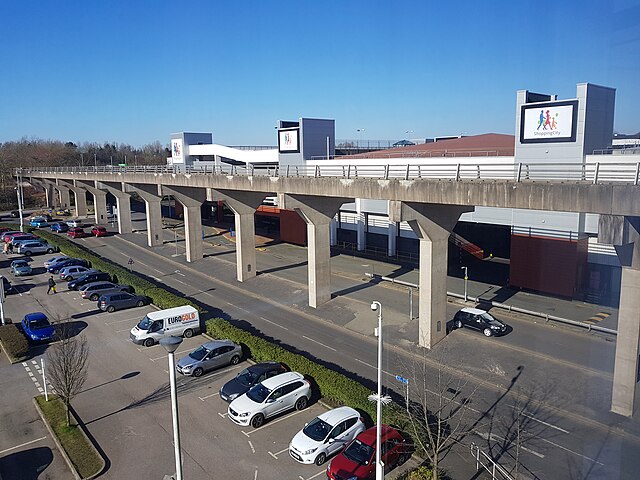The Mexico City Metrobús, simply known as Metrobús, is a bus rapid transit (BRT) system that has served Mexico City since line 1 opened on 19 June 2005. As of February 2018, it consists of seven lines that cross the city and connects with other forms of transit, such as the Mexico City Metro. The most recent line to open was line 7, running for the first time double-decker buses along the city's iconic boulevard, Paseo de la Reforma.
Metrobús on Insurgentes station
Hamburgo Station
Southern section of Avenida de los Insurgentes seen from a bridge of the Periférico near the Perisur Mall, showing the Perisur MB station
MB station Xola under construction near the intersection of Eje Central and Eje 4 Sur; 25 August 2008
Bus rapid transit (BRT), also referred to as a busway or transitway, is a bus-based public transport system designed to have much more capacity, reliability and other quality features than a conventional bus system. Typically, a BRT system includes roadways that are dedicated to buses, and gives priority to buses at intersections where buses may interact with other traffic; alongside design features to reduce delays caused by passengers boarding or leaving buses, or paying fares. BRT aims to combine the capacity and speed of a light rail transit (LRT) or mass rapid transit (MRT) system with the flexibility, lower cost and simplicity of a bus system.
TransJakarta in Jakarta, Indonesia. It is the longest BRT system in the world (251.2 km).
30 meter long Transmetro in Guatemala City for 300 passengers
Elevated busway at Runcorn Shopping City
The Rede Integrada de Transporte in Curitiba, Brazil, was opened in 1974. The RIT was inspired by the National Urban Transport Company of Peru.








